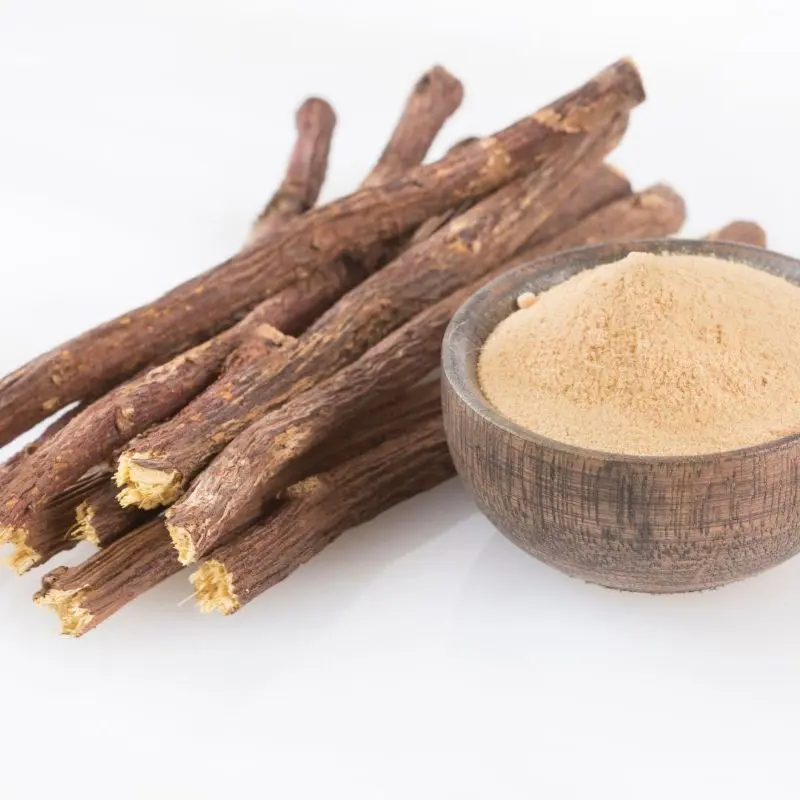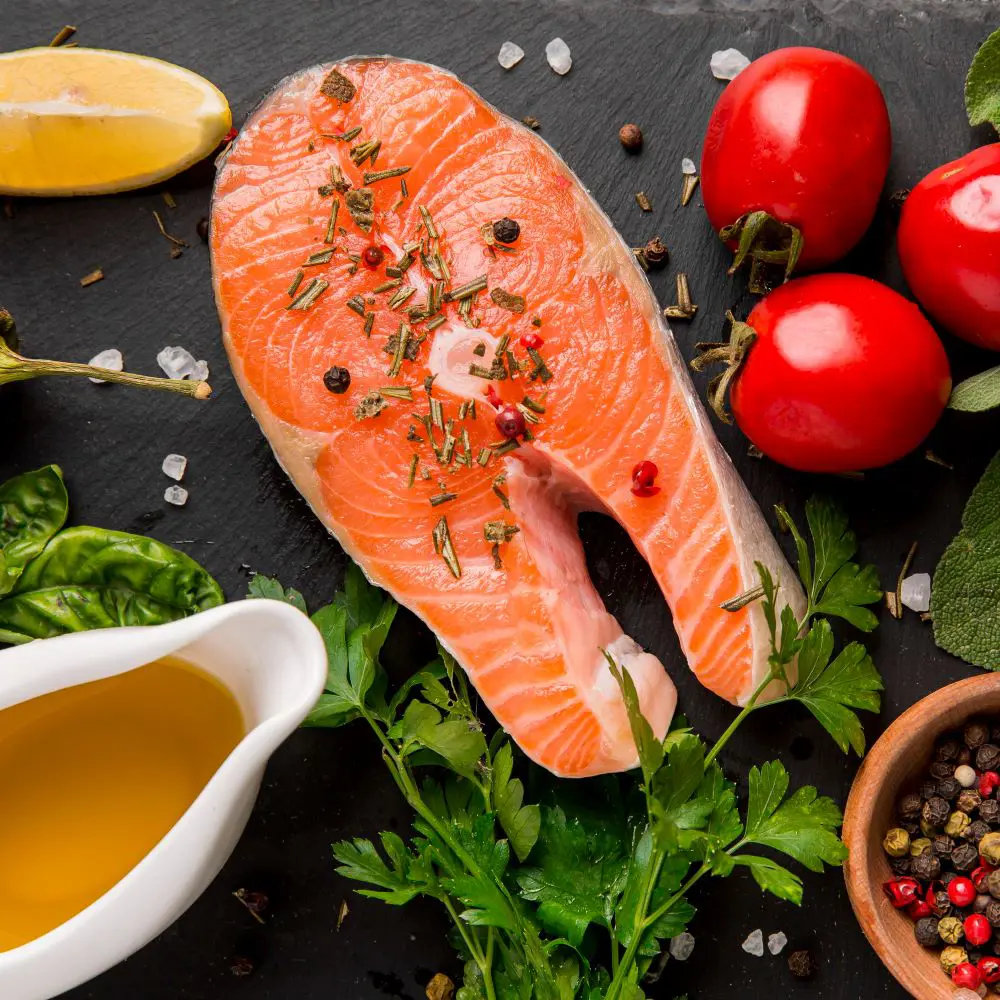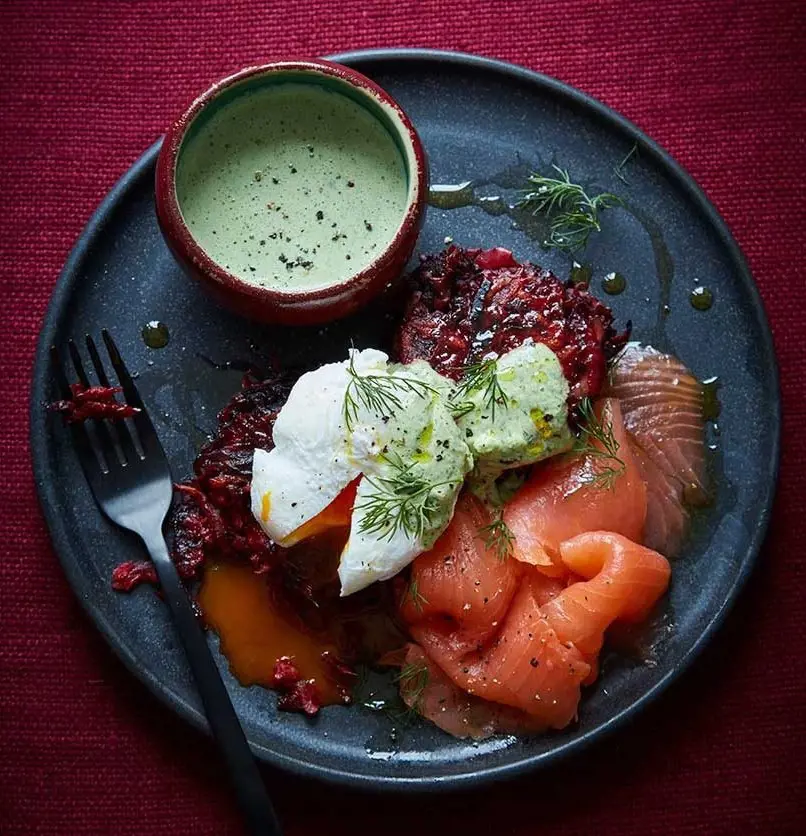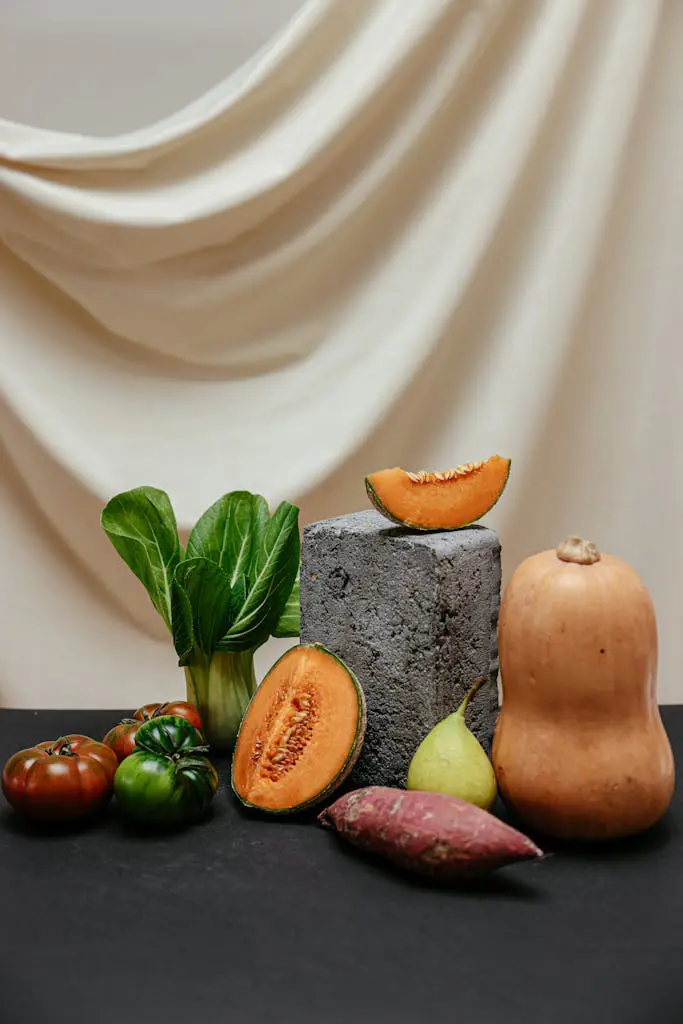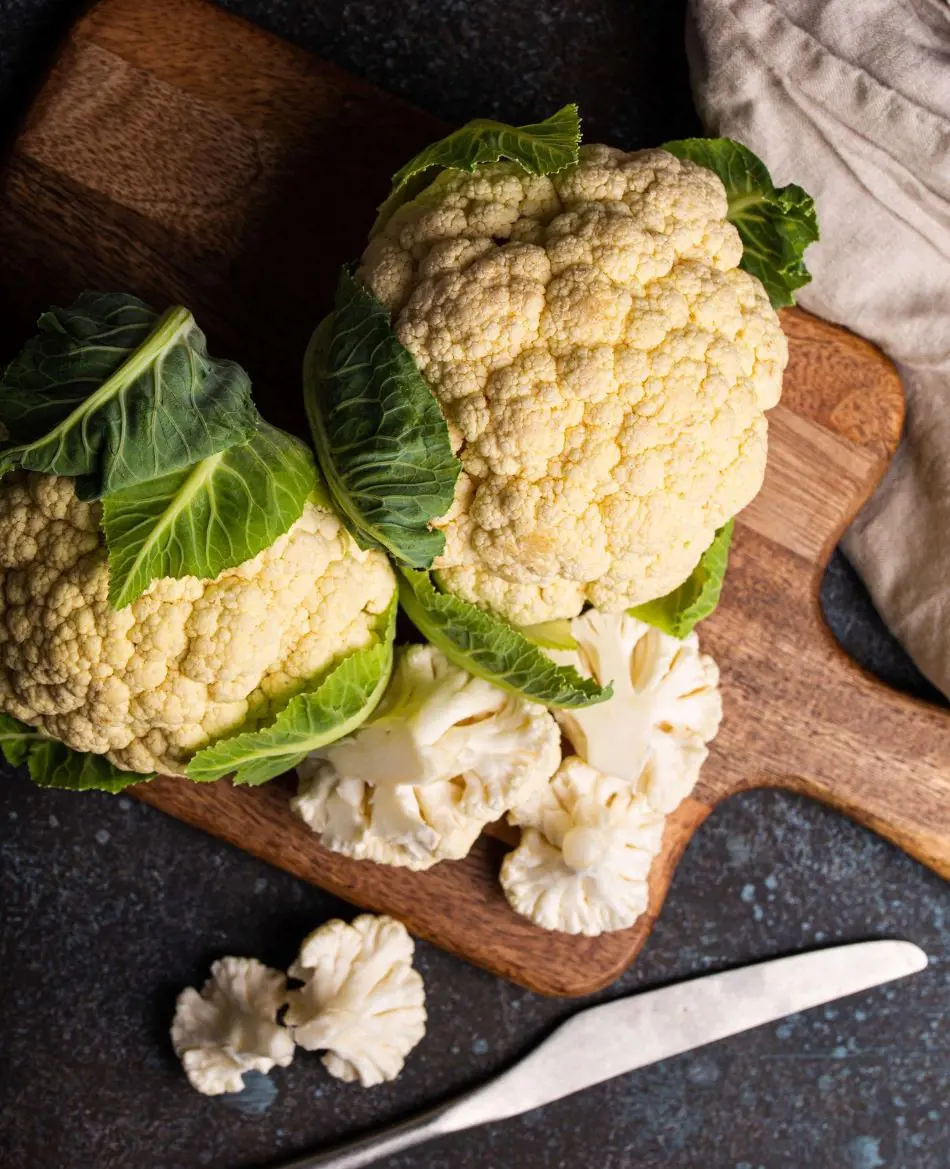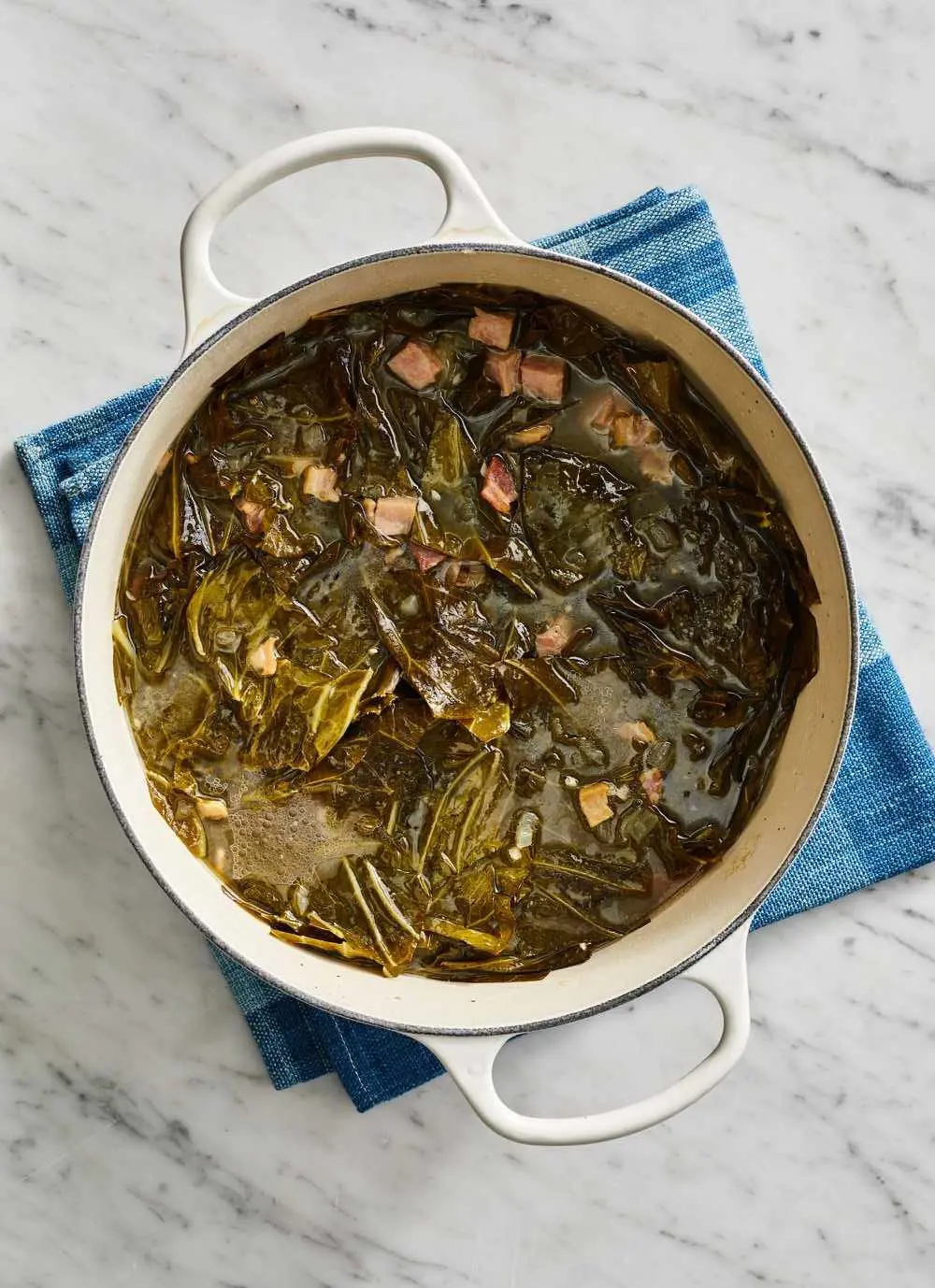93 Types Of Tea: Complete List Of Tea Names
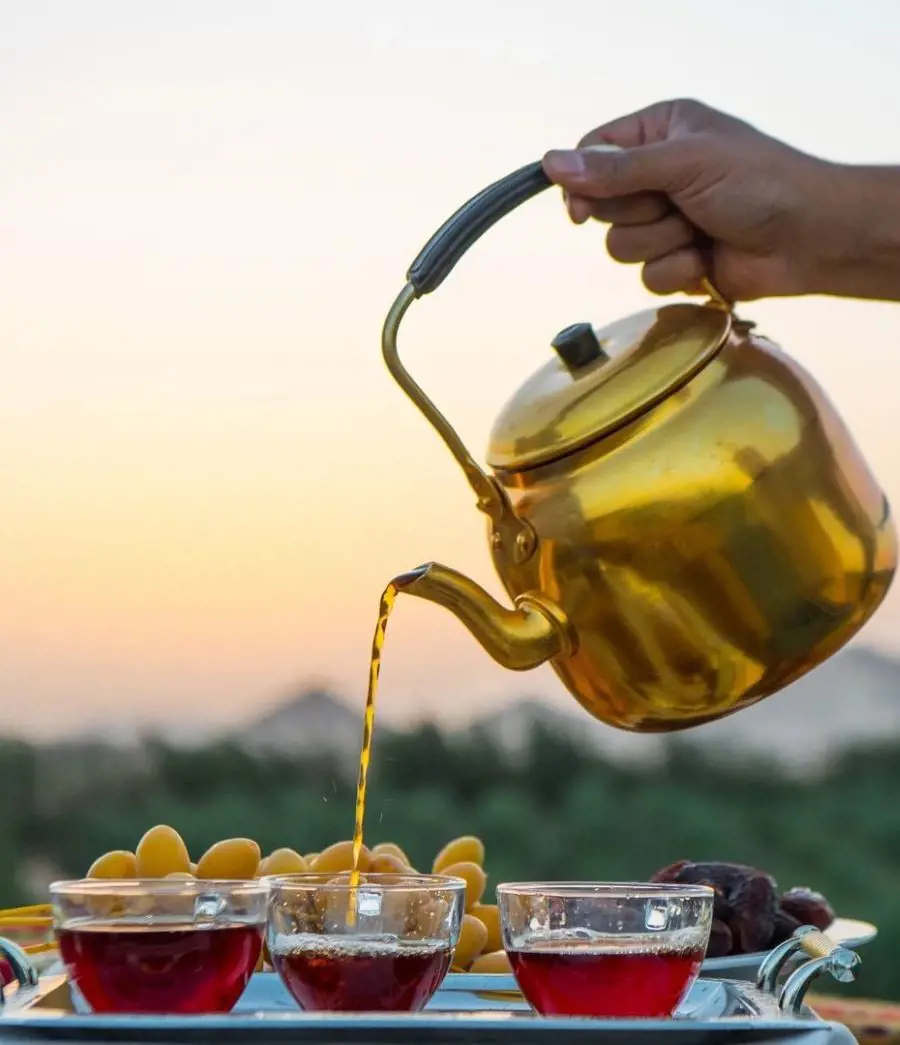
Tea is a fragrant beverage prepared by steeping cured or fresh leaves of Camellia sinensis in hot or boiling water. Across the globe, with each unique term for tea, such as cha, chai, or any other, comes a diverse collection of tea varieties steeped in rich history and tradition.
Unlike coffee, this refreshing drink has many uses, from soothing a sore throat to promoting better sleep or providing a morning caffeine kick.
Tea Origin, History, And Development

Tea plants are originally from East Asia, and it's believed that tea's center of origin is near the source of the Irrawaddy River. From there, it spread out in a fan-wise pattern into southeast China, Indo-China, and Assam.
The natural home of the tea plant is considered to be a relatively small area between Nagaland, Manipur, and Mizoram along the Burma frontier in the west, extending through China to Chekiang Province in the east, and generally south through the hills to Burma and Thailand to Vietnam.
In ancient East Asia, people ate tea in various ways for centuries, such as nibbling on raw leaves, adding them to soups or greens, or fermenting them and chewing them as betel is chewed. Over the centuries, different techniques for processing tea and various forms of tea were developed.
During the Yuan and Ming dynasties, unoxidized tea leaves were initially stirred in a hot, dry pan, rolled, and air-dried to prevent oxidation, resulting in green tea. In the 15th century, oolong tea, where leaves are partially oxidized before being heated, was created.
Western preferences, however, favored the fully oxidized black tea, where the leaves were allowed to oxidize further. Yellow tea was discovered accidentally during the production of green tea in the Ming dynasty due to less careful practices that caused the leaves to turn yellow, which resulted in a different flavor.
Different Types Of Teas
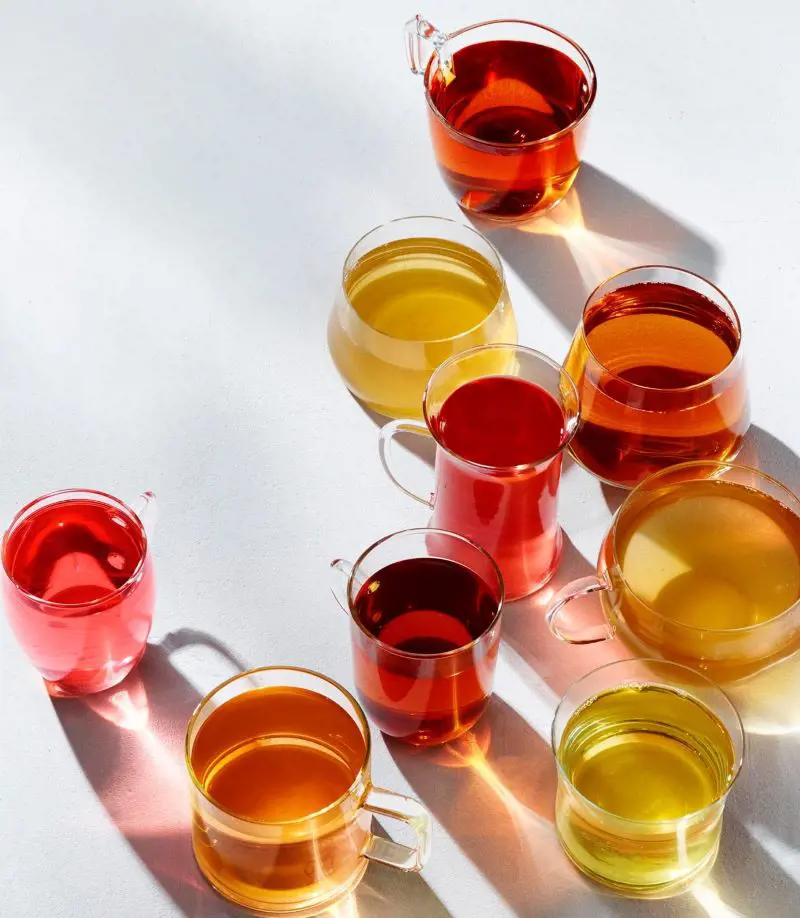
Tea is generally divided into categories based on their growing and processing methods. There are two primary types of tea: true teas and herbal teas, also called tisanes. True teas, such as white tea, black, tea, oolong tea, and green tea, all come from the tea plant Camellia sinensis.
This evergreen plant can be grown in diverse climates, contributing to the distinct flavors found in each type of tea.
Herbal teas, or tisanes, have no caffeine and are not derived from Camellia sinensis leaves. Instead, these herbal blends are made using spices, flowers, and various plant leaves, including fruits and herbs. Sometimes, herbal teas incorporate true tea leaves to add specific flavors, referred to as herbal infusions.
These infusions can be classified as black, white, green, or oolong based on the tea leaves and processes used in making the herbal blend.
Teas come in various flavors and offer different benefits, and it's common to mix them with other flavors to create a unique combination of flavors. Let's explore the different types of tea and the wide variety of teas within each category.
Green Tea
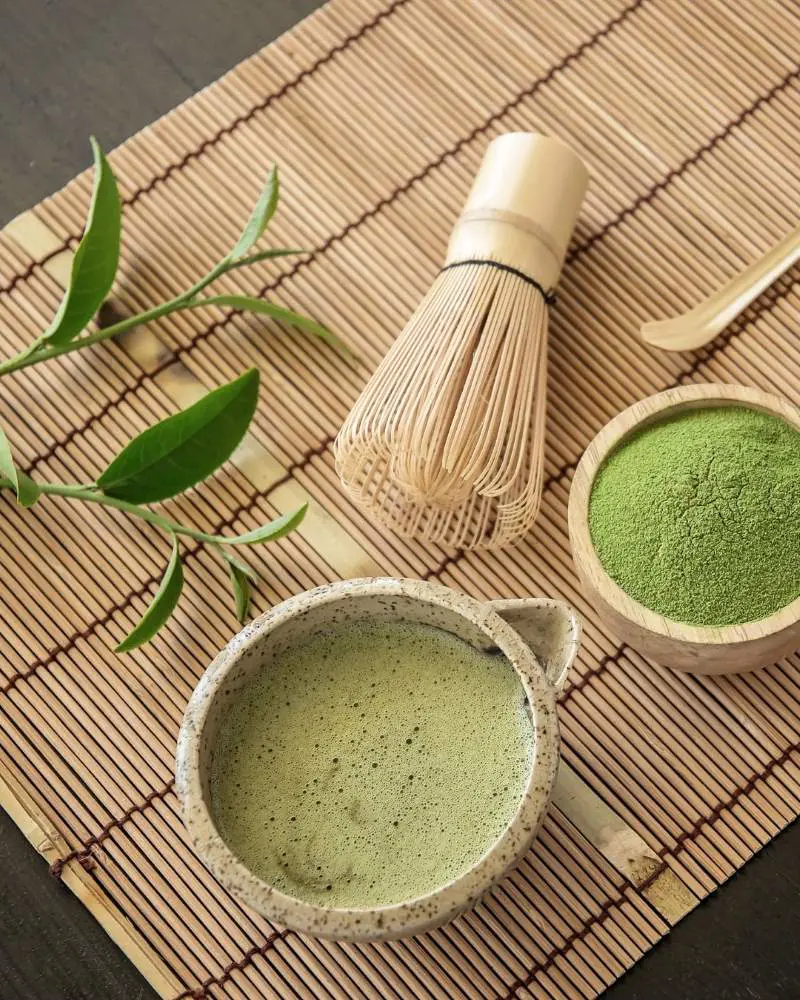
Green tea is a type of tea made from Camellia sinensis leaves and buds that have been minimally processed, allowing it to retain its natural green color. This fresh, grassy flavor tea is widely praised for its potential health benefits due it its high levels of antioxidants.
Types of green tea
Chinese green teas:
In China, loose-leaf green tea has been the most preferred type of tea since at least the Southern Song dynasty. Originally steamed, Chinese green tea has been commonly pan-fired in a dry wok since the early Ming dynasty.
1. Anji Bai Cha
2. Bi Luo Chun
3. Chun Mee
4. Gunpowder
5. Huangshan Maofeng
6. Jasmine
7. Jin Shan
8. Longjing (Dragon Well)
9. Lu'an Melon Seed
10. Taiping Houkui
11. Xinyang Maojian
Japanese green tea:
Driven by customs and preferences, Japanese green tea is uniquely processed through steaming to stop fermentation, resulting in its distinct flavor and character.
12. Bancha
13. Genmaicha
14. Gyokuro
15. Hojicha
16. Kabusecha
17. Kamairicha
18. Konacha
19. Kukicha
20. Matcha
21. Mecha
22. Sencha
23. Shincha
24. Tamaryokucha
25. Tencha
Korean green tea:
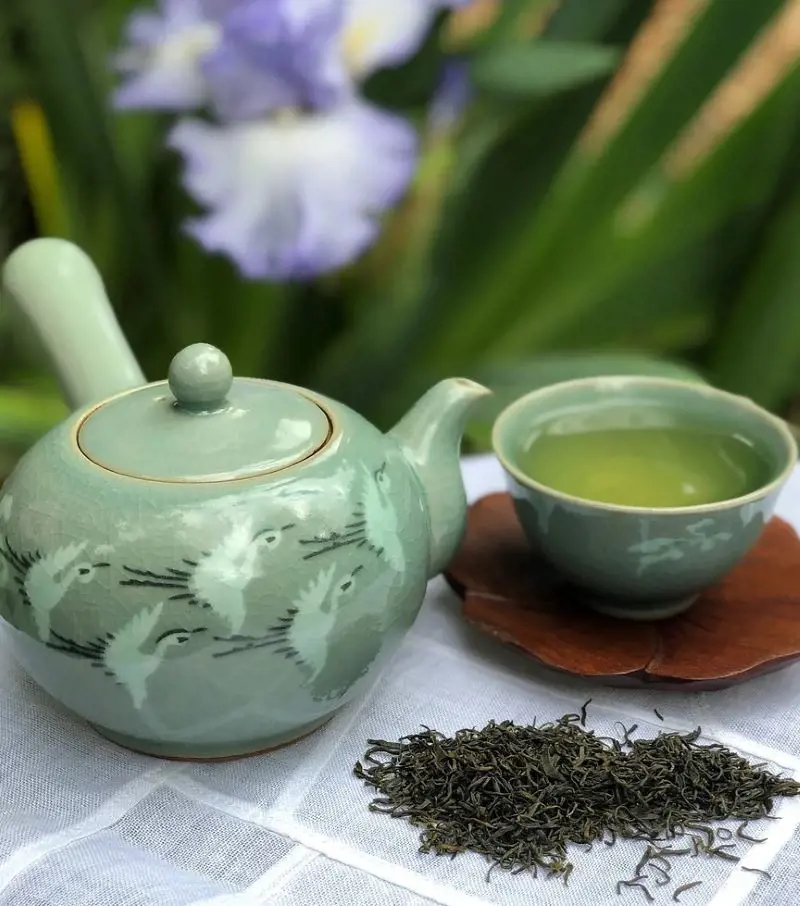
Korean green tea can be classified into different types based on several factors. The most common factor is the flush or the time of the year when the tea leaves are plucked.
26. Daejak (kkeunmul-cha)
27. Jungjak (semul-cha)
28. Sejak (dumul-cha)
29. Ujeon (cheonmul-cha)
White Tea
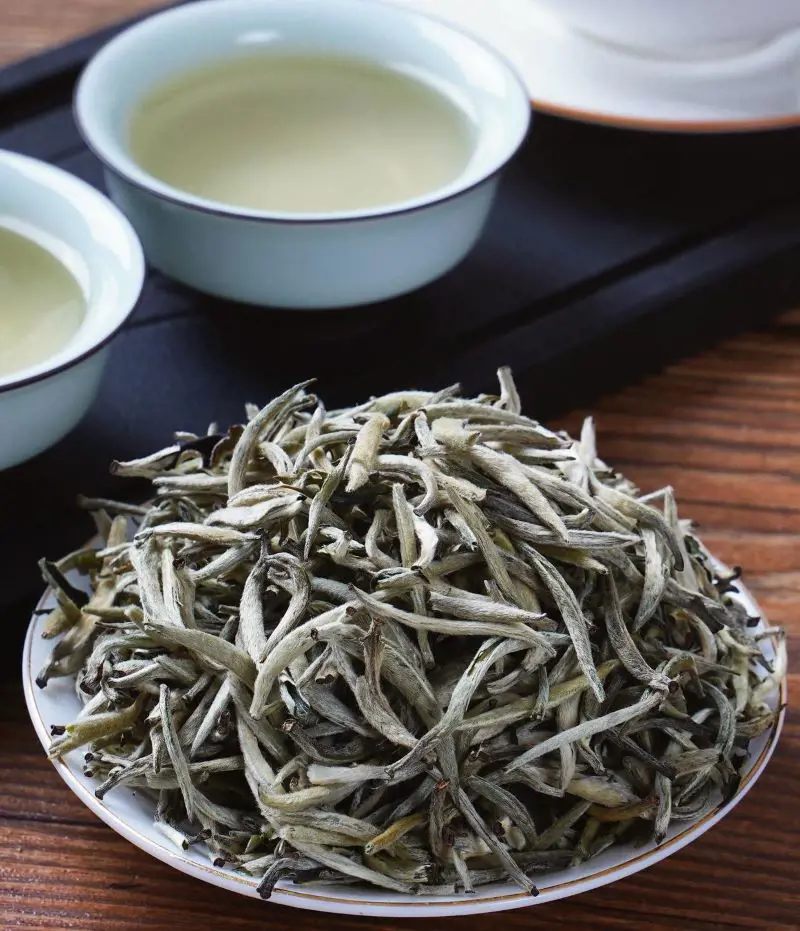
White tea comes from young or minimally processed leaves of the Camellia sinensis plant. Despite its name, this tea is typically pale yellow when brewed.
It is primarily harvested in China, especially in Fujian province, but is also more recently produced in other regions like Taiwan, Thailand, Eastern Nepal, Galle (Southern Sri Lanka), and northeast India. White tea has gained immense popularity and is now available in various forms, including Indian tea.
Types of white tea
30. Bai Mudan (white peony)
31. Darjeeling White
32. Gong Mei
33. Shou Mei
34. Silver Needle
Black Tea
Black tea, sometimes translated as red tea in East Asian languages, is a type of tea that is more oxidized than yellow, white, green, and oolong teas. Black tea is generally stronger in flavor compared to other true teas.
It first came from China and is known as hong cha there, holding a special status among Chinese teas. Today, the beverage is popular throughout East and Southeast Asia, including China, Japan, Korea, and Singapore, both for drinking and cultivation.
Types of black tea
Chinese black tea:
35. Congou
36. Dianhong
37. Jiu Qu Hong Mei
38. Keemun
39. Lapsang souchong
40. Yingdehong
Korean black tea:
41. Jaekseol (Bird's tongue)
Indian black tea:

42. Assam
43. Darjeeling
44. Kangra
45. Nilgiri
Sri Lankan black tea:
46. Ceylon
Turkish black tea:
47. Rize
Oolong Tea
Oolong is a traditional semi-oxidized Chinese tea made through a process that involves withering the tea leaves under the sun, followed by oxidation before curling and bending. Oolong is particularly popular in South China and among ethnic Chinese in Southeast Asia.
From sweet and fruity with honey aromas to green and fresh with complex flavors, and woody and thick with roasted notes, oolong tea can vary widely in taste depending on the horticulture and production techniques used.
Types of oolong tea

Fujian oolong tea:
48. Bai Jiguan (White Cockscomb)
49. Da Hong Pao (Big Red Robe)
50. Huangjin Gui (Golden Cassia)
51. Rougui (Cassia)
52. Shui Jin Gui (Golden Water Turtle)
53. Shui Xian (Narcissus)
54. Tieguanyin (Iron Goddess of Mercy)
55. Tieluohan (Iron Arhat)
Taiwanese oolong tea:
56. Alishan oolong
57. Baozhong
58. Dong Ding (Frozen Summit or Ice Peak)
59. Dongfang meiren (Oriental Beauty)
60. High-mountain or gaoshan
61. Jun Xuan
62. Ruan zhi
Other varieties:
63. Dancong
64. Darjeeling oolong
65. Vietnamese oolong
Yellow Tea
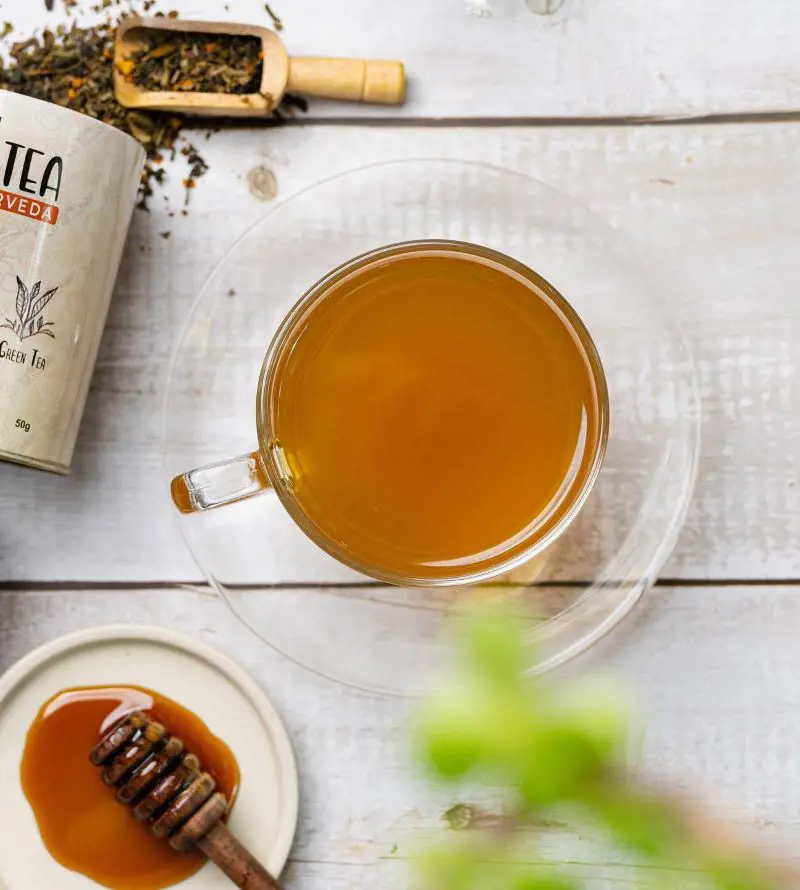
Native to China, yellow tea is an increasingly rare and pricey variety of tea. The technique of making this tea is like green tea, but it involves an extra step of encasing or sweltering, which gives a gentle yellow color to the leaves during the drying process.
Yellow tea can specifically refer to Chinese huangcha and Korean hwangcha.
Chinese huangcha:
66. Beigang Maojian
67. Huoshan Huangya
67. Junshan Yinzhen
68. Meng Ding Huangya
69. Weishan Maojian
Korean hwangcha:
In Korean tea terminology, domestic tea is mainly categorized into two types: green tea and fermented tea.
Yellow tea is used to represent gently oxidized fermented tea with no implications of processing techniques or an outcome that would name the tea "yellow tea" in the Chinese definition.
Fermented Tea
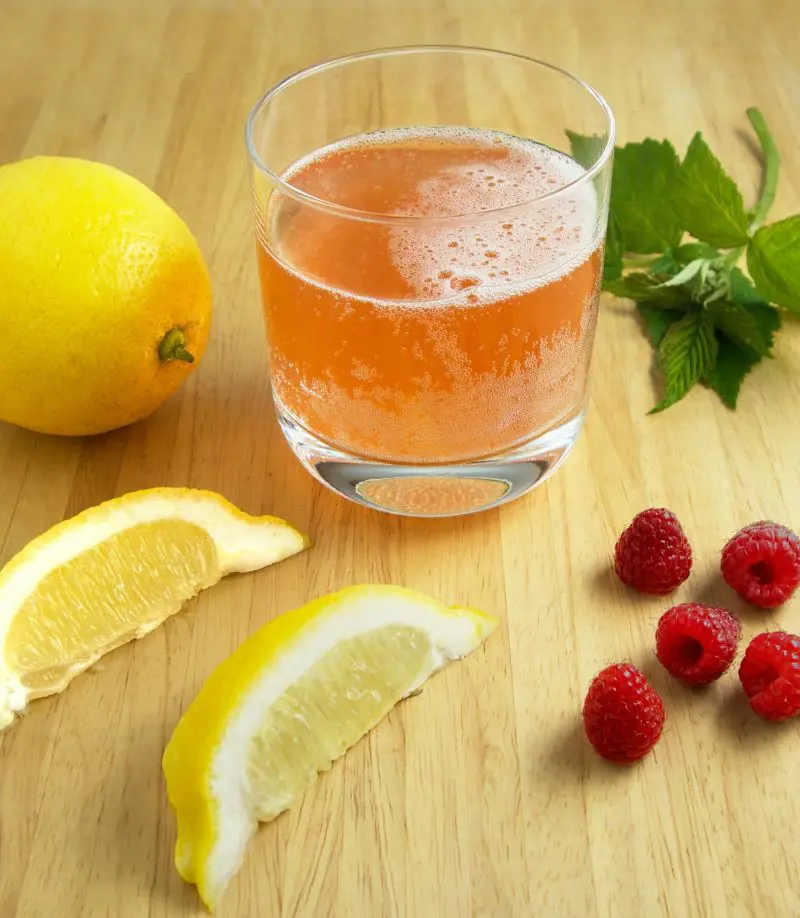
Fermented tea, also referred to as dark tea or post-fermented tea, is a type of tea that goes through microbial fermentation, lasting from a few months to many years. During this process, the tea leaves are exposed to humidity and oxygen, causing endo-oxidation and exo-oxidation.
The majority of fermented teas are produced in China, where they originated, and you can also find some in Korea and Japan. In Myanmar, lahpet is a type of fermented tea enjoyed as a vegetable, and in northern Thailand and southern Yunnan, similar pickled teas are eaten or chewed.
Types of fermented tea
Chinese fermented tea:
70. Fu zhuan cha (The famous fu zhuan “brick tea”)
71. Liu an lan cha (Anhui Lu'an basket tea)
72. Liu bao cha (Guangxi Liubao tea)
73. Lu bian cha (Sichuan border tea)
74. Pu'er cha (either "raw" sheng pu'er or "ripened" shu pu'er)
75. Qing zhuan cha (Hubei green brick tea)
76. Zang cha (Tibetan tea, often called Tibetan brick tea)

Japanese fermented tea:
77. Toyama kurocha
Korean fermented tea:
78. Tteokcha
Herbal Tea
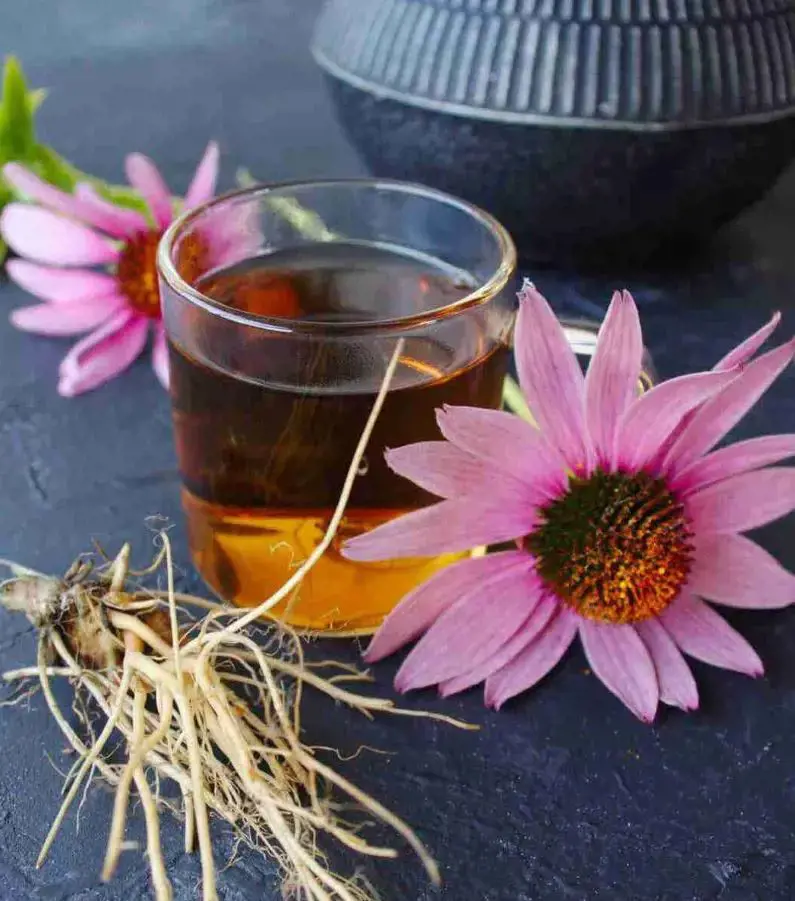
Unlike traditional true teas, herbal teas are crafted by infusing herbs, spices, or various plant materials in hot water. Frequently, people use terms like "herb tea" or simply "tea" to describe a wide range of herbal teas.
Not only do these teas taste delicious, but they also come with numerous health benefits. They've been used as natural remedies for various conditions for centuries. Below, we've got a list of some popular herbal teas for you to explore.
Types of herbal tea
79. Ashwagandha
80. Bamboo
81. Buckwheat
82. Cinnamon
83. Chamomile
84. Chrysanthemum
85. Echinacea
86. Hibiscus
87. Lavender
88. Lemon Ginger
89. Lemon Grass
90. Mint
91. Moringa
92. Rooibos
93. Turmeric
Recent posts
Nutrition
Nutrition
Licorice Root: Benefits And Uses
You can spell it liquorice or licorice; this herb or root has been in use for centuries in most medicinal applications, as a natural sweetener and to enhance flavors. Regarding its origins, it comes from the root of the "Glycyrrhiza galbre" plant and...
Nutrition
Is Salmon Good For You? Nutritional Facts and Benefits
Salmon fish is a staple diet throughout the world, popular as a super food for its nutrients. Whether savored in sushi, poached, grilled, roasted, or pan-fried, salmon offers minerals and vitamins that contribute to healthy bodily functions. In addit...
Nutrition
25 Smoked Salmon Recipes That You Will Enjoy
Salmon is a silver-colored fish that is loaded with many nutrients, vitamins, and omega-3 fatty acids. Smoked Salmon is better for improving your health and reducing the risk of cancer, heart-related diseases, fights inflammation, reduces anxiety and...
Nutrition
Are Sausages Healthy? Nutrition And Health Benefits
Sausages are tasty in an addictive way, making them one of the most popular foods worldwide. You may have enjoyed this convenient food often, whether on a bun with mustard or grilled on a barbecue, the simple preparation methods are what makes its co...
Nutrition
20 Vegetables That Are Rich In Iron
Iron is essential for our bodies to function well. When we don't get enough iron, we often feel weak and tired. It's important to address iron deficiency early by eating the right foods. Fortunately, many vegetables are rich in iron and can help prev...
Nutrition
15 Cauliflower Nutrition Facts And Health Benefits
Cauliflower, a cruciferous vegetable, resembles a white variation of its relative, broccoli. Like broccoli, it has closely bunched florets attached to a thick core, often surrounded by a few leaves. While white is the most common color, cauliflower i...
